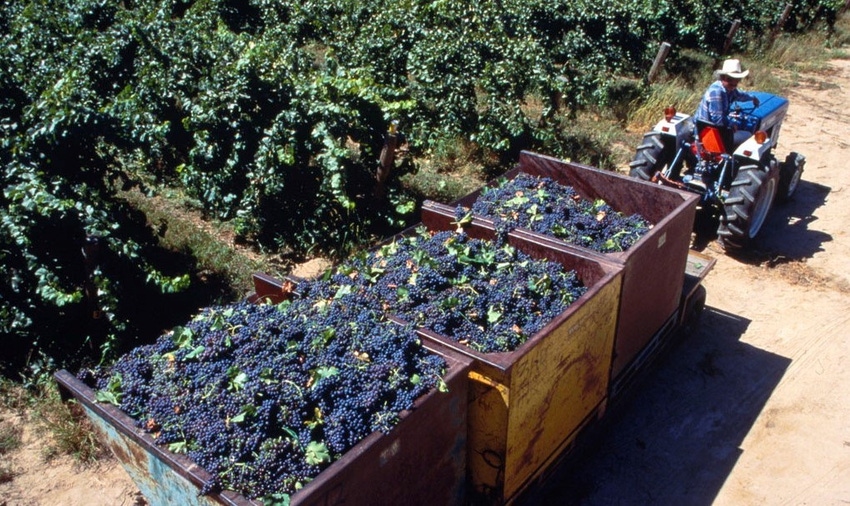
“It could have been worse” is a phrase frequently heard among the California grape growing community following release of the Final Grape Crush Report.
The report, issued by the National Agricultural Statistics Service in Sacramento, covers all grape tonnage crushed in 17 districts during the 2019 season, including purchased tonnage.
The 2019 crush, based on required input from processors, totaled 4,114,672 tons, down 8.7% from the 2018 crush of just over 4.5 million tons. Reds accounted for the largest share crushed (2,157,061 tons), a category that fell nearly 12% from the previous year. White wine varieties were down 3.9%.
Table grape crush was reported down by 5.6% (134,470) while tons crushed in the raisin type categories took the biggest hit — at 61,056 tons, a 26% drop.
Industry response quickly started coming in. “Unpicked fruit are the words of the day,” according to The Ciatti Company, the world’s largest bulk wine and grape brokerage in Novato. “The harvest is the second smallest since 2011 and while not good news for farmers, it is a welcome respite for an industry under pressure from oversupply.”
Says Ciatti broker Glenn Proctor, “The decreases indicate that varieties such as Cabernet Sauvignon, Pinot Noir, and Zinfandel may have been the varietals left on the vine!
“Cabernet was most surprising as many thought this was going to be the first year that the variety, with many new plantings in Coastal and North Valley areas, was going to produce more tons in California than Chardonnay. That was not the case.”
Napa value
Of the 17 districts, grapes from Napa County, District 4, received the highest average price of $5,797.07 per ton, up 3.9% from 2018 while the District 3 region of Sonoma/Marin counties ranked #2 in return rate of $2,823.67, up .2% from 2018.
In looking for positives, a press release from Lake County was quick to note — “(Our) flagship variety — Sauvignon Blanc — saw a 15% increase in tons crushed. (And), in terms of wine grape pricing, the 2019 statewide average price for all varieties was $830.52. While that figure is down from 2018, in Lake County, the average price for all varieties was $1,802.56 — double the statewide figure and up 5% from 2018.”
Jeff Bitter, President of Allied Grape Growers, is always a go-to guy for an opinion of what the numbers might mean. He suspects they were a bit under-reported from a grower standpoint because “we don’t know what was left in the field and never reported.
“On the surface, it seems that numbers are way down from 2018 while in reality the crop wasn’t smaller, it was there, it just didn’t get harvested because the market was so terrible, tanks were still full, and there was no room in the inn. Hidden behind the numbers is the reality that we don’t have the tank space regardless of what the crush size was.”
Asked his message to growers, he noted the timing of our phone conversation. “Ironically, as we speak, I’m driving by a vineyard that’s pushed over on its side and is getting piled up to be burned. That’s a frequent response as some growers react to the market and the unfavorable market prices resulting in a significant amount of vineyard removal.
Vine removals
“While the common caveat is always dependent on crop size, I don’t expect to see as many grapes hanging on the vine in 2020 as we did last year,” he said. “I think we’re going to see upwards of 35,000 acres come out of the ground this year, between natural vineyard attrition we see every year an addition of 20,000 acres being pulled out because the market is so bad.”
While the future is always difficult to predict, he noted: “There will be two critical time periods over the next few months where we can get more information. First, around May, we’ll get our initial graphs on what the crop size should be and then further down the line, we’ll get better information about what was removed over the winter.
“Once we have those two pieces of information, that’s going to give us quite a bit more detail to make estimations of how the upcoming year’s harvest might go.”
For more news on pests, disease management and other issues affecting vineyards, subscribe to the bi-monthly newsletter The Grape Line.
About the Author(s)
You May Also Like




